My attempts at traveling light, paring everything down to the bare minimum, started and ended with my clothes. My daily uniform amounted to a wetsuit, a quick-dry T-shirt and a Gore-Tex paddling jacket, with a single, lightweight set of dry clothes to wear in camp.
It all fit in a small drybag behind the seat in my cockpit, leaving the spacious waterproof bow and stern hatches free for camping supplies, books and three weeks’ worth of food. Thus began my preparations for an 80-day kayak trip down the West Coast.
Why traveling light holds the key to true happiness
Packing for the first time took three hours. Usually, when packing a kayak, I put everything in various stuff sacks and then stow those in suitable spaces in the boat. But the narrowness of our kayaks on this particular trip and the vast quantity of our larder required an entirely different method.
A big part of why I like paddling so much is the hard limit on what you can carry, which is both physical and mental.
We had virtually every individual item of food unpacked and strewn on the dock. After pushing the narrow items, like bags of tent poles and rolled up sleeping pads into the far reaches of the bow and stern, and then jamming in the larger items like tents and sleeping bags, we resorted to squeezing single cans and bags of food into all the remaining irregular spaces in-between. I had sardines wedged beside my hips.
It reminded me of the long-ago advice of some productivity guru about how fitting important things into your life is like putting rocks in a jar. You have to put the biggest ones in first, then you can put in the pebbles and finally the sand, but if you start with the sand first, you run out of space for the big stuff. Which means you first need to figure out what is most important.
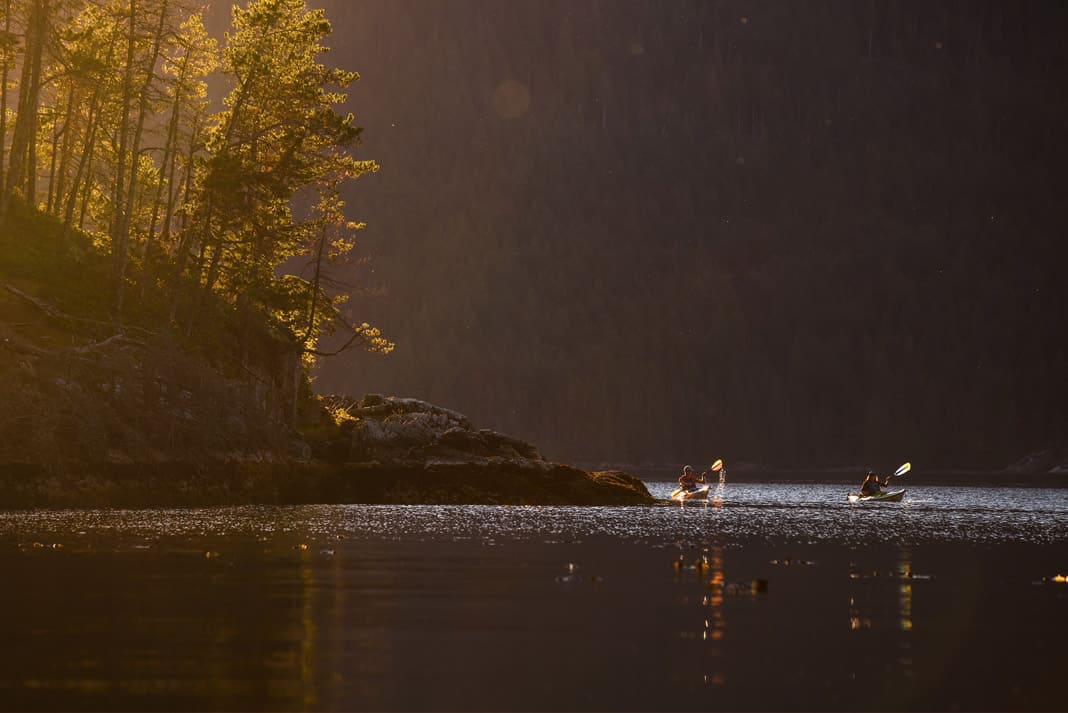
After launching off the dock in Prince Rupert, I remember the joyful realization that everything I needed for the foreseeable future was trimly packed and organized into the slim confines of my kayak’s hull. Inside the shell of my kayak were my legs, followed by my toes, then a bulkhead, some clothes and sleeping gear and a thin boundary of Kevlar between me and the rest of the known and unknown world. The self-contained feeling at the start of a trip always puts a smile on my face.
A big part of why I like paddling so much is the hard limit on what you can carry, which is both physical and mental. At home, the more space we have, the more we hang onto things representing aspirations, like a kind of material to-do list. The photographs we may someday put into albums, the guitar we’ll learn to play when we have time, the books purchased but unread. These things surround and nag us about everything we don’t have time to accomplish.
Everyone I know is engaged on some level with managing either their personal storehouse or downsizing the possessions of older relatives. It looks the same—clearing out cluttered basements and rented storage lockers, sorting China sets, silverware and antique furniture for the thrift store or Craigslist. Our lives are funnels, taking in more than we need, and more than we can care for or properly care about.
Less is more—in life and in your kayak
I think of managing this inventory of goods as a kind of background radiation constantly bombarding and degrading us. It’s no wonder minimalism has caught on. Japanese decluttering guru Marie Kondo recently turned her ruthless war on stuff, made famous in her bestselling book The Life-Changing Magic of Tidying Up, into a Netflix series.
In Free Solo, the recent documentary on free climber Alex Honnold, he turns minimalism into an art form, living in a van to pursue the ultimate in simple pastimes—the climbing of natural rock with little more than a chalk bag, a pair of shoes and fraying pants. The appeal is not so much in living without, but the clarity of mind and purpose suggested by such simplicity.
Surely, it’s no accident sea kayaking flourished in the counterculture 1960s Pacific Northwest as part of a wholesale rejection of western materialism.
Wilderness travel is boot camp for downsizing, a lesson in just how little we truly need. Streamlining also can be a metaphor for the other transformations occurring in the wilderness—casting off of old ideas and routines, coming out the other side with an emptier pack and a brimming spirit. Surely, it’s no accident sea kayaking flourished in the counterculture 1960s Pacific Northwest as part of a wholesale rejection of western materialism.
I turn to the water when I need a respite from the flood of stuff in my life. I’ve bought books about hiking and paddling purely for their packing lists and tidy color-coded diagrams showing where everything should be stowed. Unfortunately, there’s no equivalent list or diagram for everyday life to help me manage the malaise upon arriving home to a cluttered house begging for my divided attention.
“We all live in a machine designed to get us to neglect what is important in life,” says journalist and author Johann Hari, who writes about society’s epidemics of addiction and depression. “Nobody thinks they’re going to lie on their death bed and think about all the things they bought; they’re going to think about moments of love and connection and meaning in their lives, and yet we’ve created a culture designed to get us to neglect those things.”
Learning to let go of clutter
Wrapped up in our attachment to stuff can be found profound sadness. I just attended a memorial service for my wonderful uncle, whose passing marks the end of a family era. My cousins now have to sell the house he and my aunt lived in for 40 years.
The thought of disposing of most of their possessions magnifies the heartache that he’s not coming back. It’s tempting to hold on. But it helps to remember our lives are not the sum of our things. Even the kayak and the paddle I used on that 80-day trip are long gone. I don’t need them anymore, but the memories are strong.
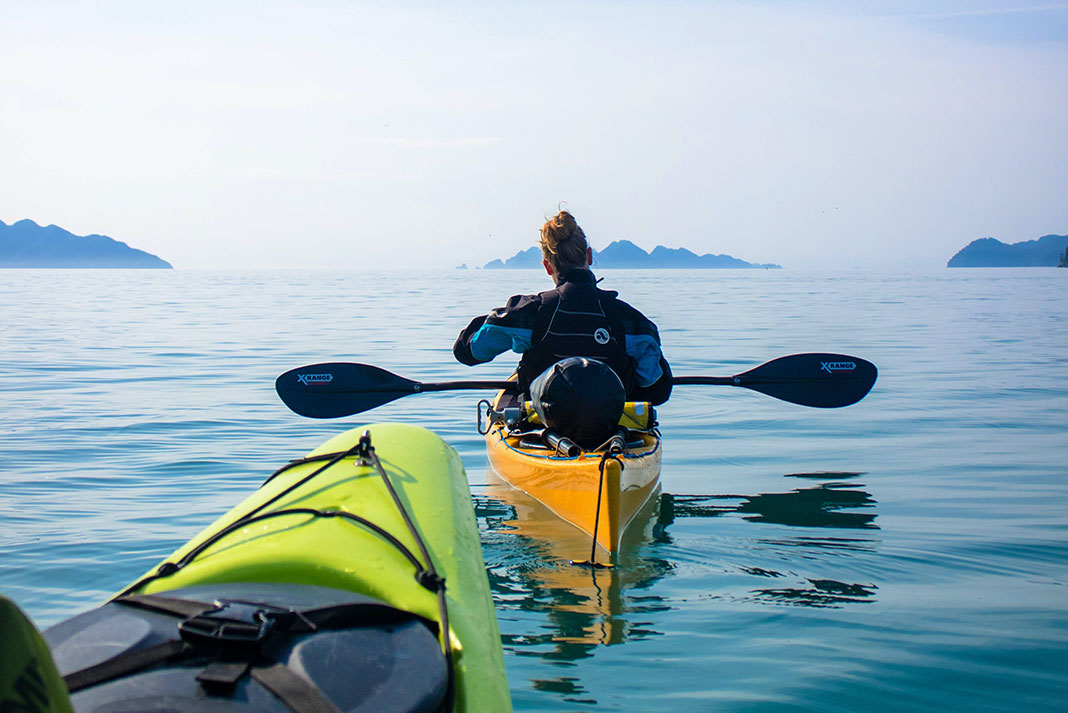
In the modern world, I think of the kayak as a kind of prop for the brain the same way those blocks and pillows in yoga class help people who aren’t flexible enough to bend into the pretzel poses. It’s a crucible for simplification, a metaphor for clarity of purpose and forward motion.
Life keeps renewing and moving. Once afloat in a kayak, you’ve belted yourself in for a ride, during which you will not think about anything else but what’s right here in front of you. I find solace in the thought of getting my kayak finally loaded and setting off, with only the view of the upturned bow and then everything else ahead.
This article was first published in the Spring 2019 issue of Paddling Magazine. Subscribe to Paddling Magazine’s print and digital editions, or browse the archives.
“The question of what you want to own is actually the question of how you want to live your life.” ―Marie Kondo | Feature Photo: Andrew Strain



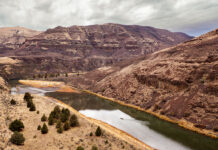
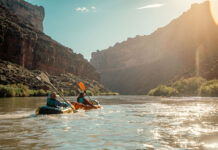
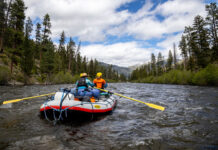
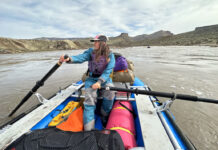


Great food for thought. I also love the minimalist aspects of paddling trips.
Every year I take a trip now for five days on the river. I am always asked by others interested in going also on the trip with me, what should I take ?. My answer remains with essential items needed only. Most times they pack too much clothes, food, and extra gear they could easily live without. At the end of each trip, it is easy to look back and realize so few items were needed and what an enjoyable time they had for five days